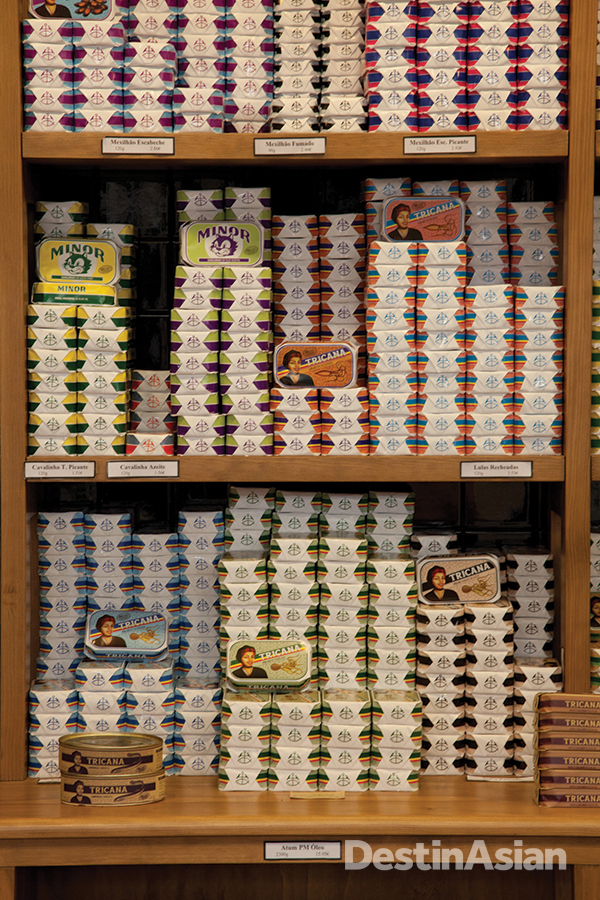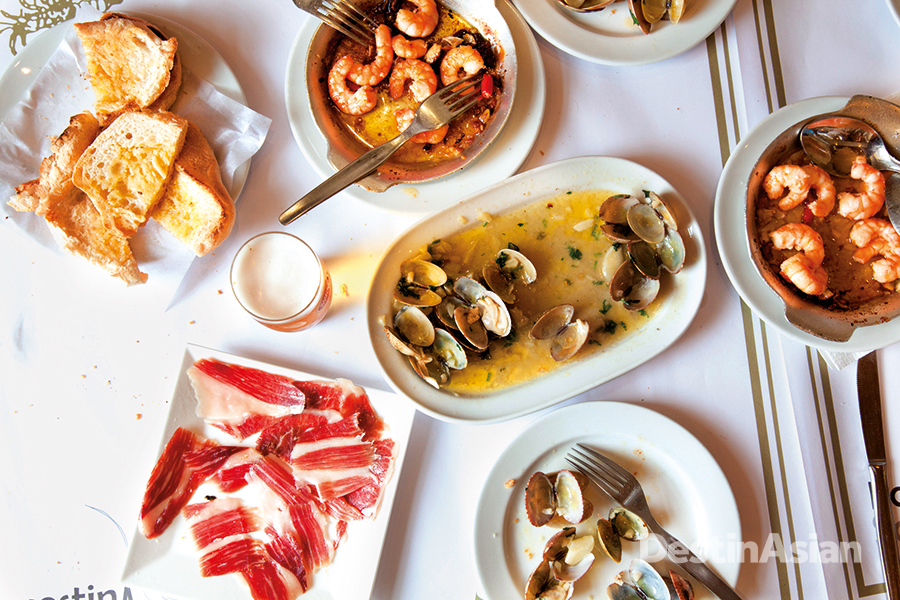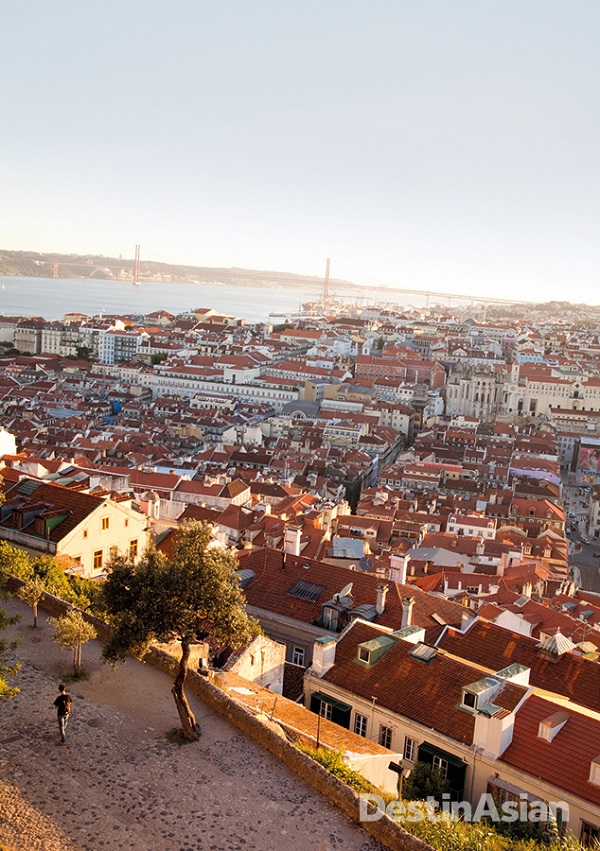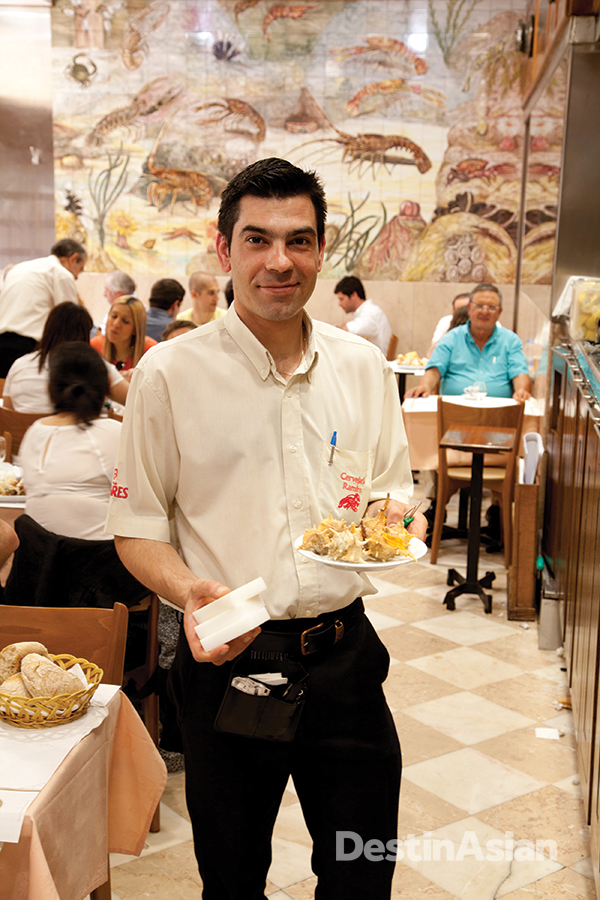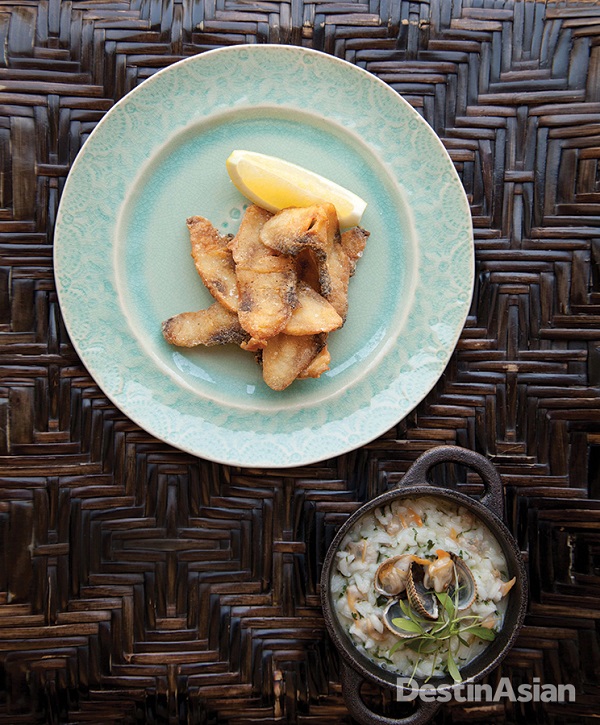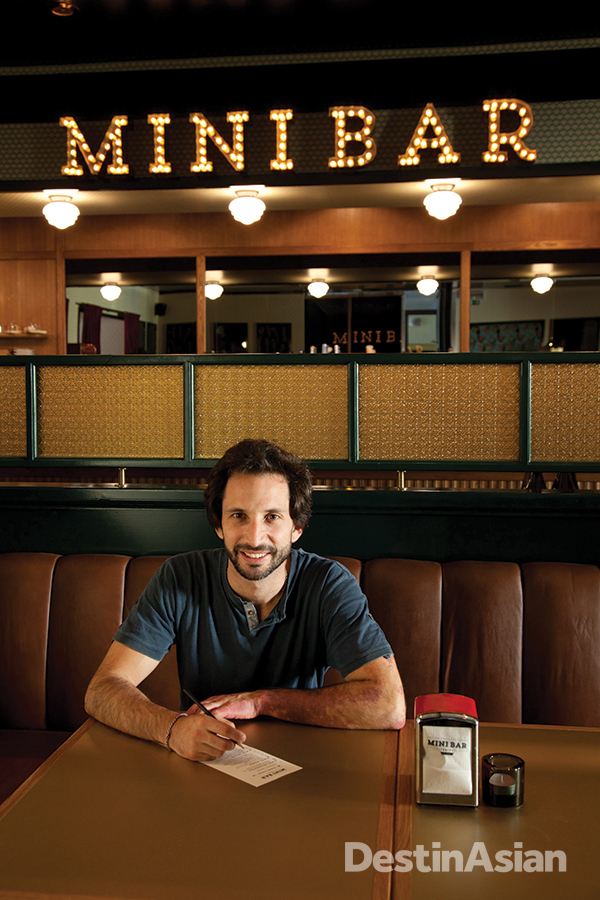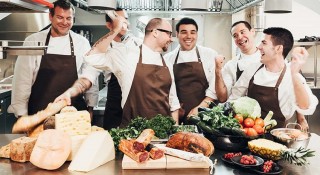In Lisbon, the Iberian peninsula’s other tapas—petiscos—is finally enjoying its share of the culinary limelight.
By Célia Pedroso
Photographs by Emily Mott
When it comes to talking about European cuisine, Portuguese food is either lost in the shuffle or remembered only for custard tarts, salt cod, and sardines. If it weren’t for the international love of chicken piri-piri, Portugal might not be on the world’s food map at all.
But times are changing. Having co-authored a guide to Portuguese cuisine and led countless food tours through my hometown of Lisbon, I’ve watched as a boom in tourism has brought a slew of new restaurants and cafés to the city. And with them has come a newfound appreciation for petiscos, the Portuguese version of tapas. These small plates were once relegated to humble tasca bars, and because of that never quite became the big thing that tapas are in Spain. But now they’re everywhere, with chefs competing to attract diners with the best cod cakes or the most tender prego (steak sandwiches).
One of the first Lisboans to realize the potential appeal of petiscos on more sophisticated menus was José Avillez, a dynamic 35-year-old chef and restaurateur who headlines Lisbon’s food scene with five different restaurants, all in the well-heeled Chiado neighborhood. His first venture, the casual Cantinho do Avillez, remains as popular as ever for its creatively tweaked traditional Portuguese dishes, things like home-preserved tuna with ginger and lime mayonnaise, partridge pies, and Nisa sheep’s-milk cheese baked with cured ham and rosemary-scented honey. Café Lisboa, his fourth restaurant, is famous for its savory pastéis de massa tenra meat pastries. And just blocks from Cantinho, Belcanto, which he took over in 2012, earned a Michelin star in its first year of operation. But it’s at Avillez’s latest eatery, Mini Bar, where he’s taking his most experimental approach to petiscos yet.
With Art Deco fixtures, wood paneling, and its name in lights above the bar counter, the restaurant plays on its setting in the century-old São Luiz Teatro Municipal in Chiado. Sitting on one of the comfy sofas in Mini Bar’s light-filled lounge area, Avillez explains, “This is not exactly a restaurant—it’s more of a gastro bar with mini plates, a reinvention of petiscos in an entertaining atmosphere. It’s a different concept from what’s usually found in Portugal.”
Standouts on the tasting menu include the tuna temaki cone with spicy soy and a delicate ceviche of Algarve prawn, presented on halved limes. It’s all fresh and fun, as are the bright-green spherifications of caipirinha “shots” and a moreish mini-burger of PDO beef. Avillez, who counts a stint at El Bulli among his credentials, describes his cooking simply as that of “a Portuguese chef, with Portuguese produce and influences from traveling.” And the journey has only just begun. “There’s still so much more we can do with Portuguese food,” the chef insists.
Lucy Malouf, an Australian author and food writer, tells me that after a recent holiday in Portugal, she was “utterly smitten with the old-fashioned simplicity and unassuming charm of the place. I love how the culinary connections with far-flung parts of the world—thanks to its seafaring history—seem almost as strong as the connections with its own land and the waters that lap its shores.”
A good place to begin exploring these flavors is the renovated Mercado da Ribeira, a huge 19th-century marketplace in Cais do Sodré that has been drawing foodies by the masses since it reopened as Lisbon’s biggest central market in May. On one side of the 5,500-square-meter building are traditional stalls selling fresh coriander, tomatoes, and silvery fishes. On the other side, a wood-benched food court sits in the middle of a perimeter of smart kiosks, each vying for attention with different petiscos offerings.
The best shops in town have outlets here, including Manteigaria Silva, purveyors of cheese, sausages, and cured ham since 1890. Don’t miss their tasting selection of three hams—pata negra (from acorn-fed black-footed pigs raised in southern Alentejo), bísaro (chestnut-fed pigs from the northeast), and a Serrano-style reserva—or, on the cheese front, the soft sheep’s-milk Azeitão.
Numerous signs in the market announce peixinhos da horta, or battered and deep-fried green beans; the name translates literally as “little fish from the garden.” (Some food historians suggest that Japanese tempura originated in Portugal, brought to Japan in the 1500s by traders and missionaries—temperar in Portuguese means “to season.”) My favorites come from the Café de São Bento kiosk, which serves them crispy and light with onion and mustard sauce.
Chef Alexandre Silva, of the acclaimed restaurant Bica do Sapato—John Malkovich is a co-owner —has set up shop in the Mercado da Ribeira as well. The tomato gazpacho with marinated mackerel or sardines is beautifully prepared with a subtle salad of tomato, shallots, and rocket. Meat-lovers will want to try the teriyaki pork belly and the farinheira, smoked sausages made of wheat flour and pork fat. Served with radish pickles, apple, and beetroot, they’re delicious.
Silva’s impressive résumé includes time at Catalonia’s celebrated El Celler de Can Roca as well as at the now defunct Bocca, once one of Lisbon’s hottest restaurants. His cooking is ingredients-driven and as fresh as it comes. “People are very curious about our dishes, and we are actually working three times harder than I expected,” he says of his stall, which is decorated with lamps fashioned from cabbage-leaf bowls. “This is not a restaurant, it’s a fun place to come and have great food for a fair price.” Not that he’s sacrificed one iota of quality. “There are only two cuisines: the good and the bad. I always try to do my best, whether it’s a sardine or a lobster.”

